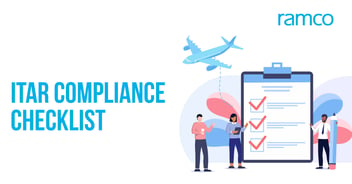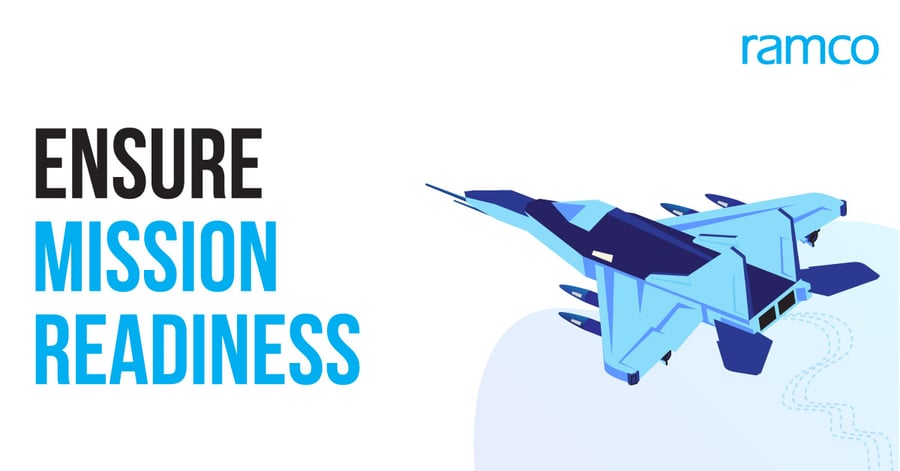

The last two blogs in our defense series discussed some of the most important regulatory bodies that monitor the defense segment and the requirements to ensure compliance. The last in this defense blog series will delve into mission capable rates and the aspects that make sure that these rates are high. For without an aircraft being mission-ready, many things will not matter, especially in the defense segment.
Defense aviation industry has seen significant changes in the last few years, with record-high budgets being allocated to the segment. This can be attributed to joint aviation ventures between countries and also increased focus on air security, among several other reasons. Along with the spurt of growth also comes the challenge of sustaining aircraft availability and ensuring low cost for sustainment. Defense departments across countries spend billions of dollars annually to sustain its fleet, in order to support current and future operations.
Sometimes they may be operating aircraft well beyond their original designed service lives and therefore are confronted with sustainment challenges. One of the other concerns that is grappling defense aviation segment is the aircraft availability for ensuring mission readiness, as even the largest defense superpowers in the world are unable to keep their aircraft mission ready. The percentage they can fly at any given time has decreased steadily each year, with the aviation defense segment averaging below 70% and can reach as low as almost 50% in a few countries. In simple words, only 5 to 6 out of 10 aircraft can be mission ready to counter the offensive launched by enemy forces.
Mission capable rates for Fiscal Year 2018 (published by Air Force Times Research):

Now the million-dollar question or I would rather say the billion-dollar question is: How can the aircraft mission readiness rate can be improved? There are many initiatives taken by the governments to address this challenge; like privatization of aviation defense training (Red Air training) to focus more on the government’s own fleet and keeping it mission-ready, and also investing in latest technologies like aviation ERP, cloud-based infrastructure, etc.
Let’s explore how Aviation Defense ERP can aid in improving mission readiness rates. Aviation defense specific ERP software with its automated and integrated solution can help government agencies and private providers in improving mission readiness rate and reducing the sustainment cost.
Following are the top 3 functions that an ERP can provide to tackle this challenge:
- Fully Integrated System: Often, government agencies and defense contractors use multiple disparate systems to manage their operations and multi fleet programs. And they resort to manual processes leading to high costs and slow turnaround time (TAT). Integrated aviation ERP like Ramco’s Defense Aviation Solution provides a one-stop solution for all defense aviation needs covering all functions like, Engineering, Logistics, Aviation Maintenance, Safety Compliance, Project cost tracking, and Accounting on a single platform.
- Offline Capable Solution: Majority of aviation defense operations are carried out in remote locations with intermittent or no internet connectivity. This poses a high challenge in providing real-time visibility to supporting departments, to ensure part and resource availability. Ramco’s offline mobile application enables a mechanic to perform their duties, like reporting discrepancies, requesting and replacing parts, releasing the aircraft to service etc. without internet connectivity. The application automatically synchronizes the information when connectivity is restored.
- Highly efficient and automated supply chain visibility: Last thing anyone in the aviation segment wants is grounded aircraft. This commonly occurs when a critical part is unavailable in the inventory at the right location, at the right time. It results in the loss of thousands of dollars due to non-mission ready aircraft and high cost of AOG procurement. Ramco Aviation solution provides visibility of inventory across multiple warehouse locations on a single screen for the procurement team to make an optimal decision. Ramco goes beyond the warehouse visibility within the organizational boundaries, to include all the aspects of the supply chain ecosystem and provide real-time visibility into the stock availability of a preferred supplier who can turn around the part just in time to make the aircraft mission ready.
Read the first blog here on Challenge In Aviation Supply Chain - ITAR Compliance and the second blog here on Checklist: A Guide To DCAA And DCMA Compliance.
Frequently Asked Questions (FAQs)
Enterprise asset management (EAM) involves the management of mission critical assets of an organization throughout each asset's lifecycle. EAM is used to plan, optimize, execute, and track the needed maintenance activities with the associated priorities, skills, materials, tools, and information. The aim is to optimize the quality and utilization of assets throughout their lifecycle, increase productive uptime and reduce operational costs.
Enterprise asset management (EAM) involves the management of the maintenance of physical assets of an organization throughout each asset's lifecycle. EAM is used to plan, optimize, execute, and track the needed maintenance activities with the associated priorities, skills, materials, tools, and information.
The software helps in effective maintenance of assets through preventive, predictive, shutdown and breakdown maintenance strategies. The system also helps enterprises mitigate equipment risks by enhanced safety standards. The streamlined operations and improved asset performance helps organizations increase their investment effectiveness.
EAM is important because it helps organizations track, assess, manage and optimize asset quality and reliability. Asset intensive Organizations have hundreds, thousands, even millions of assets which needs to be maintained to maximize / optimize life of these assets to increase the return on investment.
The key features of effective EAM are:
- Work management.
- Maintenance Strategies (Preventive/ Predictive / Breakdown / Shutdown).
- Planning and scheduling.
- Supply chain management.
- Health and safety.
- Mobility.
- Analytics.
- Improved Asset Health at reduced cost through data driven maintenance Programs
- Complete visibilityon entire maintenance data across Equipment, across Models, across Branches to aid in analysis & decision making such as to Repair or Replace the Equipment
- Insightful analysis of Inspection Data to improve customer satisfaction
- Effective maintenance management enhanced by predictive maintenance and inbuilt analytics
- Increased reliability and safety, keeps complete track of all the inspections & calibration schedules
- Mobile Application enables users to execute work while “in the field” leading to minimized non-productive time and increased productivity and reduces duplication of work and human errors in recording information.
- Quick turnaround time through Actionable Notification & Alerts for every process in real time and accessible anytime and anywhere.
- Improved Regulatory Part of asset management involves the implementation of better O&M practices, which can significantly improve compliance.
Asset Intensive companies under the following Industries :
- Ports
- Cement and Mining
- Utilities
- Fleet Maintenance
- Equipment Rental
- Other Manufacturing
- Real Estate & Infrastructure
- Power Generation
Contact us for a meeting and schedule a demo
This differs on case to case basis, based on the type of installation and unique industry specific requirements. Contact us for a meeting and schedule a demo.
This differs on case to case basis, based on the type of installation and unique industry specific requirements. Contact us for a meeting and schedule a demo.
Stay Connected, follow us on LinkedIn / Twitter to know more about EAM Software latest trends.


